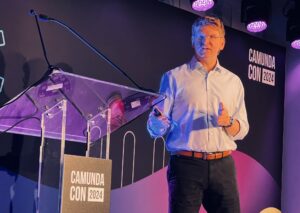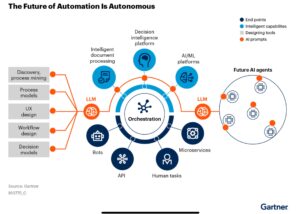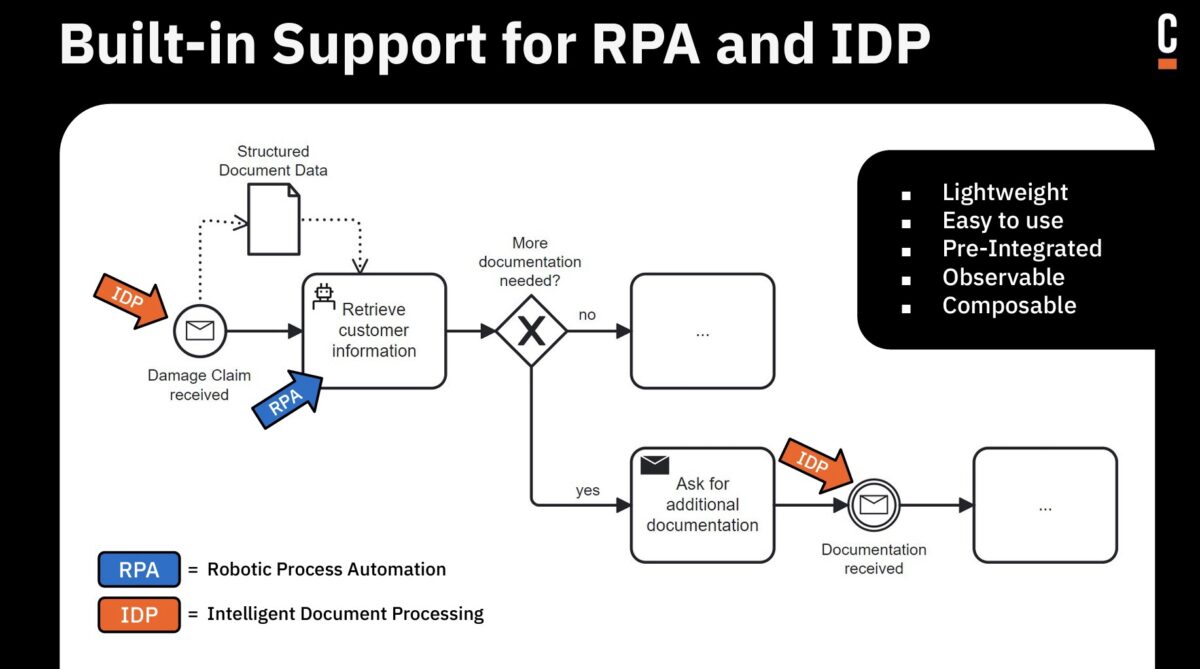It seems that a lot of my posts are about Camunda lately, mostly because these are the events that I’m attending in person. Like a lot of people, I’m a bit over online conferences since too many of them are pre-recorded and the speaking is uninspired – as a long-time conference presenter, there’s just something about presenting to a live audience that livens up a presentation. This week, I’m in New York for CamundaCon 2024, which is also being streamed live if you want to participate remotely. The livestream really is live, and they use Slido to field questions from audience members regardless of location.
Day 1 opened with a keynote by CEO Jakob Freund. It’s been a while since I’ve had a Camunda briefing, and several people hinted in advance that there would some interesting updates. He opened with their growth stats: Camunda now has more than $100M in revenue and 500 employees, which is a pretty stellar path from its humble origins. He then went on to discuss waves of change, primarily waves of AI opportunities such as the current agentic AI.The goal is to drive the right process architecture, which doesn’t mean just throwing AI at a spaghetti architecture, although many organizations will be unable to resist that path since it gives the illusion of progress. The same has happened with many new technologies in the past: think of how RPA (robotic process automation) has been added to existing overly-complicated architectures and just serves to make them more complex and rigid.

Process orchestration is a potential path to taming the complexity by providing a layer above the complicated and disparate legacy and “helper” technologies, loosely binding and coordinating them. Instead of the “spaghetti bot” architecture that results from many RPA implementations, process orchestration allows the bots to be separated from the process orchestration layer. Then, the underlying bots can gradually be replaced with APIs while maintaining the same process layer focused on customer journeys. This is not really new — in fact, I think I wrote a paper or two on exactly this method of continuous improvement rather than a big bang approach.
How is Camunda responding to this new reality? They’ve come from a core vision of process automation through microservice orchestration as a developer tool, to adding out of the box connectors, low-code capabilities, human-facing tooling, and lightweight decision management with DMN. Their next steps are the addition of RPA and IDP (intelligent document processing) to their core stack. Their RPA, in particular, isn’t a competitive independent RPA product, but a built-in capability to integrate legacy applications without having to expose an API. You can still integrate bots from other RPA vendors to Camunda processes, but they are providing a lightweight capability for customers who need a small amount of RPA without having to work with a second product. This is not — or at least should not be — particularly heavy lifting for a capable process orchestration product company, since it’s just process on a different level.
Another big announcement was about Camunda’s move further into the business solution space. Their marketplace has allowed partners to provide templates and solutions for some time, but now Camunda is taking a bigger role in providing solutions themselves. As part of this, they are providing a “process orchestration for SAP” solution. There’s another session on this later today that I plan to attend.
Jakob wrapped up his keynote with an overview of their expansion in AI, which we will be hearing more about over the next two days. This includes chatbot-supported process modeling as well as process orchestration runtime capabilities from lightweight helpers to full agentic AI: the operationalization of AI.
Some exciting announcements, and we’ll see more detail and demos at the technical keynote tomorrow.
This was followed by a keynote from Gartner on their latest move to rebrand the market under a new acronym: BOAT, or Business Orchestration and Automation Technologies.

Not completely surprisingly, Camunda’s new product announcements seem to be aligned with BOAT, and Gartner’s presence here may be an indicator that Camunda is going down the path of chasing the analysts and aiming for a good Magic Quadrant placement.

